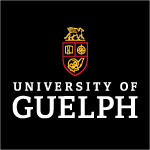Being in a disaster zone is a very unique place to be. You are essentially caught in the crosshairs of individuals having gone through the most traumatic experience of their lives, and those same individuals trying their best to pick up the pieces and start over. The atmosphere can be chaotic, disorganized, even desperate which is why the power of hope is invaluable in an environment like this. Having graduated from IDS at Guelph in 2011, I was equipped with a better understanding of the mechanics behind how social and economic vulnerabilities can be magnified in the event of a disaster. While natural disasters will ‘level the playing field’, the long-term recovery for the fringe population is much more arduous and fraught with obstacles in returning to their pre-disaster state. I have had the privilege to provide hope to communities worldwide over the last four years. Whether it is in a typhoon-hit area, or on the beaches awaiting refugee boat arrivals, providing a shred of hope is a currency that yields results. This is my story.
By: Patrick McBride
After my departure from university, in January 2014, I decided to take the first steps in reinventing myself. I trusted my education and wanted to put it to the test by volunteering in some far-flung region of the world. I drew inspiration from a grad course on Disaster Planning and Management delivered by Nonita Yap. To this day, I find myself revisiting notes I took from that course, scanning proposals, projects and powerpoints to come up with best practices in a field setting. I thought I was ready for a new challenge so I Google searched ‘disaster response volunteering’. This organization called All Hands Volunteers popped up as one of the first search results. I read a little about the organization to gauge their philosophy and agreed that a project they had set up on the island of Bohol in the Philippines was an excellent opportunity to tie together my training and my primal need to get my hands dirty. So I nervously applied. I knew I had to keep myself accountable on this one.
A week or so later, I received an acceptance letter outlining certain requirements on my end to make it a done deal. Travel insurance—check, signed waiver—check, flight confirmation—check. Nothing had quite set in yet. In the weeks leading up to my departure I was filled with all sorts of nervous excitement. I was well-travelled, I had worked several summers up north in the Canadian wilderness, but I had never heard of All Hands Volunteers before and I knew nobody that could provide me with any sort of indication that they were a reputable organization. I was determined not to let this dissuade me, otherwise I would have once again made more excuses not to pursue an area of genuine interest. So on a cold February 22nd, 2014 I was airborne on a Japan Airlines flight on route to Manila. What on earth have I gotten myself into, I kept telling myself. This is crazy, nobody does this. How could I do this to my comfort zone? The revolving door of thoughts kept bombarding me to the point of exhaustion. It was only on the tail end of the final domestic flight into Tagbilaran City airport, that I saw some very blue water and a coastline dotted with palm trees that I told myself, well this won’t be so bad.
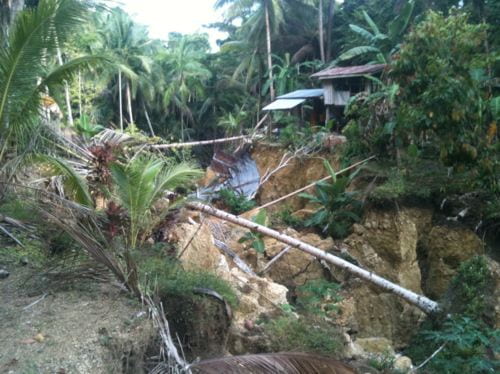
One of the many cracks in the earth formed from the earthquake just outside of Maribojoc, Bohol. Unfortunately the crack swallowed part of this house and four family members died as a result. May they rest in peace. 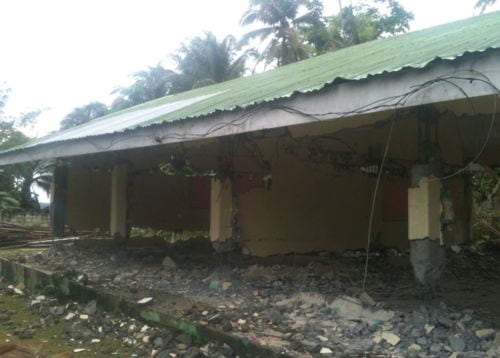
One of the school buildings we demolished. Exposing the rebar in the columns, failing lines along the interior walls and completely removing the exterior walls were our technique to safely pull the structures to the ground.
I arrived on Bohol five months after the western half of Bohol had been rocked by a magnitude 7.2 earthquake. Fresh-faced with baby soft hands, I was trained to lead a demolition team. Shortly thereafter I was thrust into a team leader position to tackle some challenging demolition sites of school buildings and houses. A demolition site is chosen by field staff from a series of metrics such as age, health, income and location. Teams of volunteers are then sent to sites which are deemed high priority according to the metrics used. Once all of the high priority sites are complete, we move on to medium priority sites, and from there, to the low priority sites. The goal before shutting down the program is to finish all sites in the work cue. If that cannot be done, any loose ends that need to be tied off or sites that need finishing are passed on to other volunteer groups. From my experience, it is rarely the case on international projects where there are other volunteer groups operating in the area, in which case we leave having done the best we could do with the funds at our disposal. The reality is that organizations that have small budgets have a limited time to operate. All Hands Volunteers really stretches those budgets to keep projects running at times for several years. The project in Bohol was less than a year long because the earthquake received only a trickle of media attention and therefore had no traction to pull funding. But still, there was quite evidently a grave need, and therefore we acted.
For eight weeks, I was in the field six days a week, interacting on a very personal level with Filipinos that had survived the earthquake and the subsequent aftershocks, listening to their stories, sharing freshly diced coconut meat and candied plantains. I had a chance to meet family members of the deceased, school principals, town mayors and everyone in between. Life on the ‘Ring of Fire’ is a struggle, but Filipinos are amongst the warmest and most resilient people I have ever met. Rarely did they ever acknowledge any pain or suffering and instead, they chose to be cheerful and resilient. They were given a choice, and what they chose was admirable. It gave me a breath of fresh air amongst all of the dilapidated buildings and exposed cracks in the earth. I would have to come back to the Philippines.
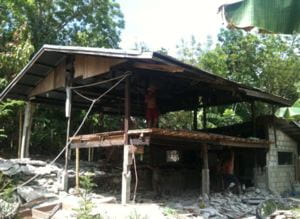
Typical Demo Site 
Our best volunteer 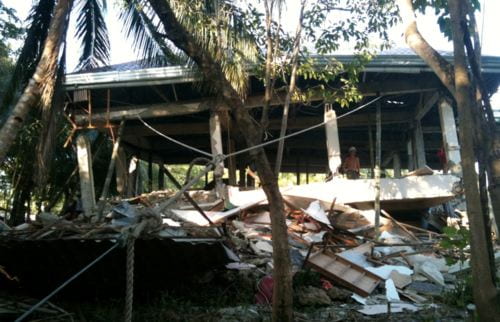
Precarious demolition 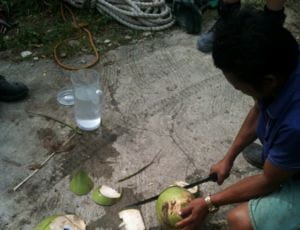
So many coconuts
Four key lessons that I learned on Bohol:
1. Be part of the community making a difference. Before leaving for the Philippines, I had no idea that there was a fully functioning community of dedicated, passionate volunteers in different places around the world. When I arrived, I was greeted by volunteers of roughly a dozen different nationalities, all strangers once upon a time, but getting along as if they had known each other since birth. It was a very positive introduction to the world of disaster response.
2. Do your research. There exist both non-profit and profit-making models. A profit-making model uniquely shapes the relationship between the volunteer and the organization. Just like the purchase of any service, you would expect a certain degree of return on your program cost. If expectations go unmet, you will be more likely to complain. When a volunteer organization has a non-profit model, your willingness to donate or fundraise towards the program goes way up. The non-profit organization that I have spent most of my time volunteering with is called All Hands and Hearts or www.hands.org (we are in the midst of an organizational merger).
3. Take the plunge. Don’t think twice. Don’t make excuses. I did that for years, and waited until I was just shy of my 25th birthday to engage with the volunteer community. Once I arrived and got my feet wet, I realized my fears were irrational. The volunteers did not bite, I did not get deathly sick, I ate well, I made tons of friends and I was able to put my degree to use outside of the classroom.
4. If you want your textbooks to come to life, embark on a journey like this. Disaster zones are usually flooded with all of the major players that you have studied over the years. The UNDP, FAO, WHO, IOM, UNICEF, Red Cross/Red Crescent and MSF to name a few. This is an opportunity to engage with them in the field and learn more about what they do. It gives you a very real head start to determine if these are organizations that you can trust in a working relationship.
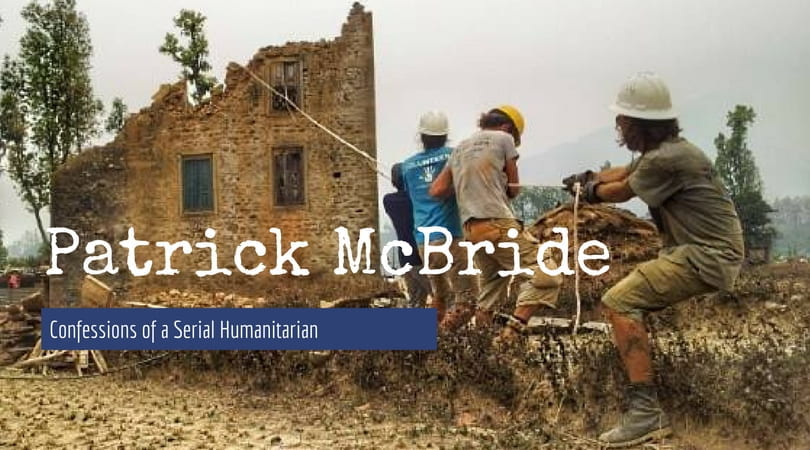
Patrick McBride, Guelph IDS graduate (2011), reflects on his life in multiple disaster and crisis zones in the Philippines, Greece, Nepal and the United States over the last four years. In this six-part series, Pat shares his unique experiences rebuilding homes and hope in some of the worst crises of our century. If you have questions for Patrick, he can be reached at patrick.mcbride01@gmail.com, or follow his adventures on Instagram: @sea.nugget
